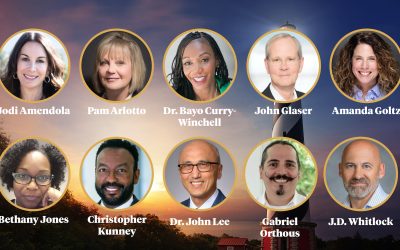Last year, I attended one of my first healthcare conferences, that sponsored by the federal agency, Agency for Healthcare Research and Quality (AHRQ). While I had mixed feelings about that inaugural event (at least inaugural for me), I returned this year to see what progress has been made on the quality front and whether or not the growing trend of consumerism in healthcare is having any impact.
I may have been expecting too much as it seemed more like a step back in time, a deja vu event.
First off, this is by and large an academic research crowd, not a group prone to uttering such phrases as “the business case of quality” or “consumerism”. No, this is a crowd that talks of patients, patient safety, research methodologies, and the like. Nothing wrong with that, from a strict research sense, but I see big problems with this if AHRQ wants to transition funded research to something beyond an academic exercise, something AHRQ has stated some intention to do with their new Innovations initiative.
But maybe it is not entirely AHRQ’s fault. The lack of innovation in healthcare, as it relates to quality, may be systemic. AHRQ Director Clancey, basically inferred such in her keynote stating that there is a lack of linkage among healthcare institutes between quality and profitability that needs to change, that today, focus is on short-term results and not long-term impacts.
In all the presentations I heard thereafter, however, never was profitability/business case for quality mentioned again. No talk of quality and cost savings, no mention of quality metrics and customer retention – Nothing. Maybe AHRQ needs to begin rethinking its grant proposal process and prompt researchers to consider such factors, develop metrics to measure such, and deliver such results as part of a researcher’s final report.
As for quality, Clancey stated that AHRQ analysis of quality metrics has found no significant change in the last several years. In fact, in some cases quality is actually decreasing, particularly disparities in care for at risk populations. The proverbial ball is not moving forward – it is in stasis or worse, like Sisyphus, rolling backwards.
Makes me begin to wonder: If quality is not improving then why exactly is AHRQ in business and why are they funding all these various research projects at institutions, that honestly, should be paying for this research themselves – that is of course if these institutions see the business value of quality?
Some quick impressions and highlights:
- Attendees are a tight knit group of researchers (~85% from academia), AHRQ employees and a smattering of government contractors. Incestuous
- Lots and lots of “Quality” templates being created to overlay on top of EMR systems to report on quality metrics. Seems as though everyone is building their own set of templates unique to their organization – a lot of reinventing the wheel here. Is this a business opportunity???
- Universal number one factor hindering adoption of quality initiatives is time. Does the reporting of quality metrics/actions put a time burden on clinicians, if yes, forget about it, it will not be adopted. Strategies to overcome include: deploying speech recognition. streamlining process as much as possible through pre-populating data fields (pull from existing EMR/PM data stores), and/or look more broadly at clinician workflow to find opportunities to “save time”.
- Clinicians prefer unstructured text entry versus pick lists as pick lists often do not adequately capture an encounter. This has led to design of multiple micro templates with branching logic for quality reporting to minimize unstructured text inputs, but provide needed flexibility.
- Majority of quality research efforts have no tie-in at the institution level to P4P programs. Again, getting back to the business case – where is it? Did ask one presenter if there was any tie-in to P4P. She stated that they are thinking about P4P, see it coming and what they are doing today should set them up to capitalize on this opportunity once it is presented to them by payers.
- According to one researcher/presentation, there are no metrics to measure quality improvements resulting from HIE/RHIO programs. Wow, that was a shocker! If true, quite embarrassing seeing as how much money federal, state and other organizations have invested in such programs to date.
- In a telehealth demonstration project, the lead investigator spoke of the numerous issues they had while working with the HIT/telehealth service vendor. This researcher stated that the market is full of telehealth service providers with such a wide range of capabilities, service level agreements, privacy policies etc., that it really needs some form of oversight, be it certification or regulation. This industry needs to get its act together and start self-policing, or else they’ll have regulators on their back in the very near future which could become a very big problem for this extremely young and rapidly evolving sector.
That’s all for now as I need to run into the next session. Will provide a brief recap, some notes on AHRQ’s Innovation Initiative, etc. in a follow-on post.




0 Comments
Trackbacks/Pingbacks